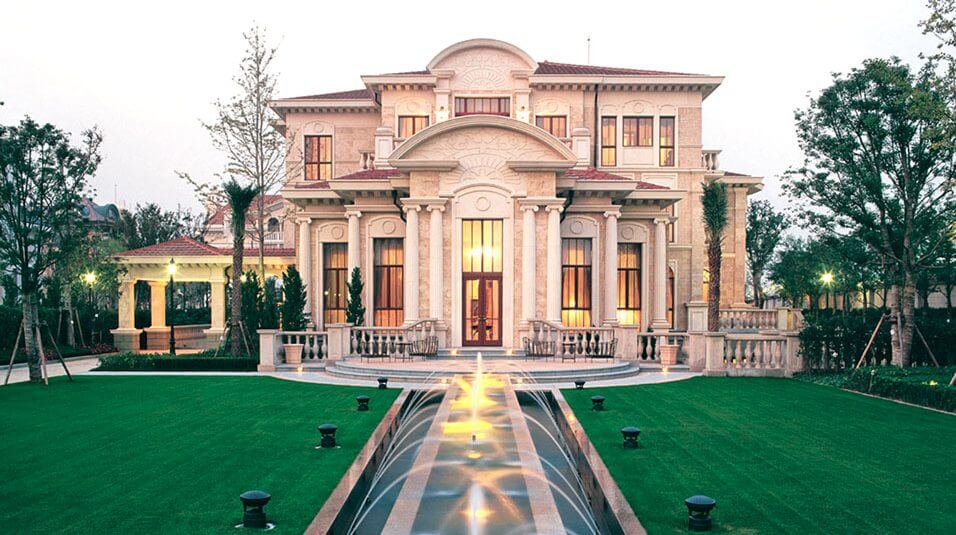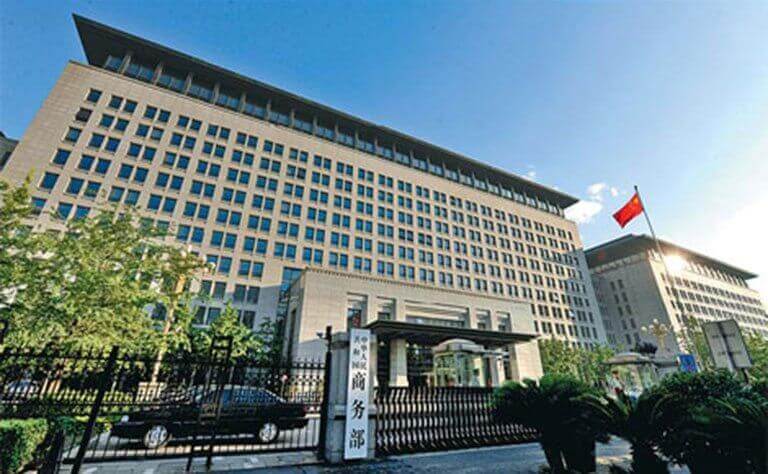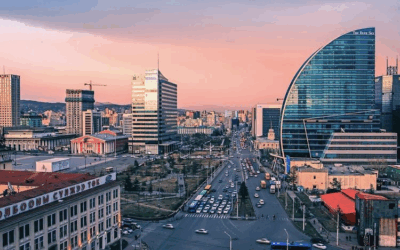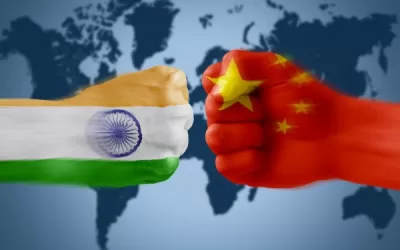Last updated July 10th, 2023.
Lately, there’s been tons of media coverage about an economic slowdown in China.
Financial analysts on television talk about about how China growth will soon face a “hard landing” while its economy crashes in the near future.
And some people have been saying this for well over a decade now.
What sort of catastrophic numbers are we talking about that will bring, what is now the world’s biggest economy in terms of purchasing power parity, to its knees?
The numbers are in: Chinese GDP expanded by 3% during 2022 – at least officially.
Some analysts argue that China may enjoy 3% GDP this year, but it could be 2% next year… 1% the year after that… and continue into a downward spiral that will eventually force them into a deep recession.
That’s a slippery slope fallacy and probably won’t happen for several reasons. Yet it’s important to first understand China’s long-term strategy and the cards Beijing has left in its hand.

A luxury mansion in Shanghai. Currently, all land in China is leased from the government for a 70 year period. Demand among foreign and local buyers alike would increase if that ever changed though.
China’s Economic Growth: A Brief History
In the 1960s, and following a disastrous experiment that was China’s “Great Leap Forward”, the Communist Party sought to mimic the industrial revolution that most western economies had enjoyed centuries earlier.
However, by the late 1980s, the industrial sector used up so many resources and eclipsed the agricultural sector by so much that leaders were warning of widespread famine due to lack of food.
The answer to this problem was modern China’s first instance of privatization.
Communes, often as large as tens of thousands of individuals, owned each piece of farmland up until that point. Once land was privatized, both productivity and crop yields were increased without even having to move factory workers back into the field.
How? Because China grew its business incentives. When farmland was owned by communes, all people in the commune got paid the same amount at the end of the day regardless of how much effort they put forth.
This quite frankly led to laziness and everyone in the commune taking a “someone else will do it” approach.
Once private land ownership was enabled, workers finally had an interest in their own land’s productivity.
Since then, the Chinese government learned capitalism’s benefits and began allowing privately held companies. Beijing permitted foreign owned firms soon after that. Further down the line, state-owned companies started becoming privatized.
China’s government also pays attention to those around them. They’ve certainly noticed the failures of India and Russia and are actively avoiding the mistakes made in their hasty switch to a different economic system.
For these countries, capitalism isn’t what failed. A policy of “overnight capitalism” that caused a shock to the system is to blame. Their entire governments were thrown out and replaced without much warning.
Russians and Indians “in the know” took advantage of their less-informed citizens, quickly using capitalism to build empires while everyone else suffered.
Capitalist China? It’s Already Happening
I was fortunate enough to spend a semester at Peking University back in 2014. The school is perhaps the closest thing to Harvard that you’ll find in China.
One of the trip’s main highlights was an hour-long lecture by a party senior official. It was interesting to learn about China’s future plans and growth prospects.
He went over several of China’s problems, along with their solutions. The answer to important issues often involved continued privatization of businesses and property.
The question still is: how does all this relate to China’s growth capability? Could further privatization help avoid an economic crisis?
Well, privatization of farmland boosted China’s productivity in the 1980s. But the same concept also applies to other means of economic liberalization in the future.
China isn’t a free country right now. Yet by breaking down barriers later, the government is able to allow further growth when they need it.
Many state-owned companies aren’t privatized and property investment remains difficult for foreigners.
Freehold real estate doesn’t exist in China, while urbanization (and thus upwards mobility prospects) is strictly limited by the central government.
Removing these barriers isn’t a foolproof solution. Nonetheless, China’s newly-privatized businesses, and their superior efficiency, have a chance of spurring growth if they’re able to be utilized.
Similarly, allowing freehold property in a place that strongly values home ownership like China could increase demand and prevent a bubble from popping.
The time for freehold real estate ownership in China will almost definitely arrive one day.
Likewise, millions of poor Chinese are living in rural areas. These less developed provinces could see an economic boom in the future, leading to immense growth.
China does indeed want to be a capitalist country – they’re just taking plenty of time with this inevitable transition.
They also fully understand that implementing a different form of government overnight would cause massive shock to its population of 1.4 billion.
Basically, China learned from all the mistakes made in Russia during the early 1990s. As such, they’re gradually phasing in the changes.
We do believe there are better places to invest in Asia than China – especially if you’re thinking about buying real estate. China does have some fuel remaining in its economy though.
You should be selective about investing in China during the 2020s. With that said, it’s a mistake to write off the whole country.
Skip the Next Western Recession
Learn the best places to invest - and where to avoid - by downloading our free Investment Cheat Sheet.







